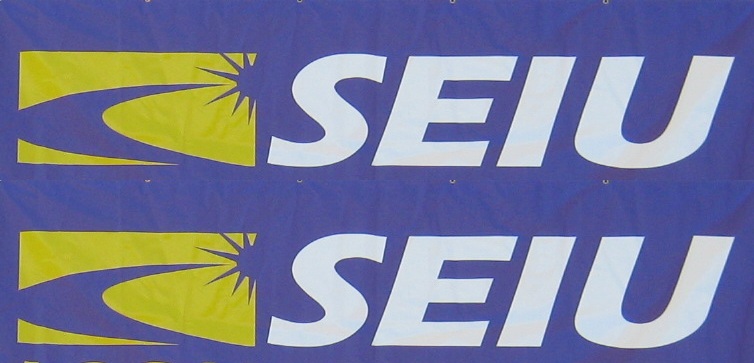These caregivers, babysitters, only made $2.25 an hour and were charged union dues.
I can personally attest to the fraud going on in the SEIU.
Just another example of Medicaid fraud in chilid welfare.
SEIU Affiliate’s Revenue Cut in Half After 'Dues Skim' Ended
SEIU Healthcare Michigan dues collection went from $11.3 million to $5.4 million
The union that exploited Michigan’s home-based caregivers for the best part of a decade has seen its revenue tumble since the scheme that enabled the exploitation ended. SEIU Healthcare Michigan reported $5,398,383 in dues and fees in 2014. That's just 48 percent of the $11,307,314 it reported for 2012, the last full year during which the union's dues skim was in place.
The information was contained in a financial disclosure report the union submitted to the federal government 57 days after the March 31 deadline it is apparently required to meet. The disclosure finally took place shortly after Michigan Capitol Confidential brought the absence of the report to the attention of the federal Office of Labor-Management Standards.
The roots of the dues skim reach back to the mid-2000s when SEIU moved to grab a share of the benefit checks of Michigan residents enrolled in the Medicaid Home Help program, which lets elderly and disabled individuals receive care in their homes. The operation involved creating a pretext to unionize the caregivers, and on that basis have union dues and fees “skimmed” from the Medicaid checks of the program's homebound beneficiaries. The unseemliness was aggravated by the fact that most of the caregivers were friends and relatives of those receiving care.
In 2005, during the administration of Gov. Jennifer Granholm, SEIU was allowed to carry out the forced unionization scheme by creating a dummy employer and executing a stealth mail-in union certification election. The operation went on from 2006 until its state contract endedon Feb. 28, 2013. Overall, the scheme poured more than $34 million into the union's coffers.
SEIU Healthcare Michigan's required financial disclosure report for 2014 is significant because it covered the first full year in which the union received no money from the dues skim. Its previous (2013) report revealed that more than 80 percent of its members fled when the dues skim ended. However, because the dues skim was still active in early 2013, it wasn’t clear whether that year's report reflected the entire membership loss or a partial, prorated figure.
The recently disclosed 2014 report indicates that the previous report probably indicated the union’s actual membership at the end of 2013, which was mostly real employees of private sector medical facilities. Union rolls did fall by a modest 190 members according to the latest report, from 10,918 in 2013 to 10,728 in 2014.
The headline number in the 2014 report is the impact of terminating the dues skim on the union's revenue and membership. Here are the relevant figures going back as far back as records are available:
- 2008: Dues and Fees — $10,497,917; Membership 53,533
- 2009: Dues and Fees — $10,871,481; Membership 57,239
- 2010: Dues and Fees — $11,508,410, Membership 56,972
- 2011: Dues and Fees — $11,974,000; Membership 55,359
- 2012: Dues and Fees — $11,307,314; Membership 55,265
- 2013: Dues and Fees — $7,119,322; Membership 10,918
- 2014 Dues and Fees — $5,398,383; Membership 10,728
The dues skim contract officially ended on Feb. 28, 2013, but it allowed the union to collect dues for one more month.
Unions are also required to annually disclose their “Total Receipts,” which in addition to member dues and fees show other money received. The annual disclosures show that after dues and fees, most of SEIU Healthcare Michigan's remaining revenue is listed under “Other Receipts.” The source for most of this is probably SEIU International, the larger union of which SEIU Healthcare Michigan is an affiliate.
In general, those amounts correspond with the size of an affiliate’s membership and the amount of dues and fees it collects. Only a few years ago, SEIU Healthcare Michigan was boasting that it was the fastest growing union in Michigan. Here are the state affiliate's “Total Receipts” as far back as records are available.
- 2008 — $15,003,971
- 2009 — $15,372,055
- 2010 — $16,465,288
- 2011 — $21,523,734
- 2012 — $18,929,050
- 2013 — $12,078,838
- 2014 — $8,419,245
In 2011, the union’s most lucrative year, it reported receiving $3,372,657 for what it described as funds “On Behalf Of Affiliates Transmittal to Them.” This was in addition to the $6,174,801 that was listed under “Other Receipts.”
According to Vincent Vernuccio, the director of labor policy with the Mackinac Center for Public Policy, the dues skim and its aftermath reveals that the primary motive behind this union’s actions has been and continues to be money, not the best interests of its members.
“The dues skim filled SEIU coffers at the expense of people who were taking care of disabled and elderly friends and relatives while giving them nothing in return,” Vernuccio said. “With schemes like the dues skim and more recently its failed attempt to unionize fast food employees, the SEIU repeatedly proves that it does not consider serving its dues-paying members to be a top priority. No wonder its members are leaving the union in droves.”
SEIU Healthcare Michigan disclosure reports over the years identified several officials receiving six-figure and high five-figure salaries. In 2008, union President Marge Robinson (formerly Marge Faville) collected a base salary of $122,700 and $133,987 overall. The amounts varied in subsequent years but the trend was generally upward.
By 2013, the union president’s base salary was $188,208, and the total amount she was paid was $199,859. In 2014 Robinson's base salary was $183,781, and her total pay was $196,195.
SEIU Healthcare Michigan did not return a phone call giving it the opportunity to comment.

No comments:
Post a Comment